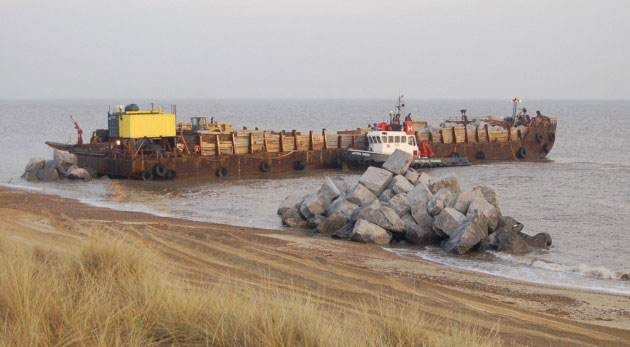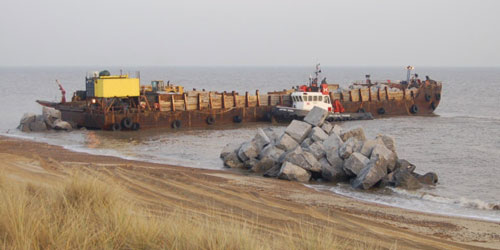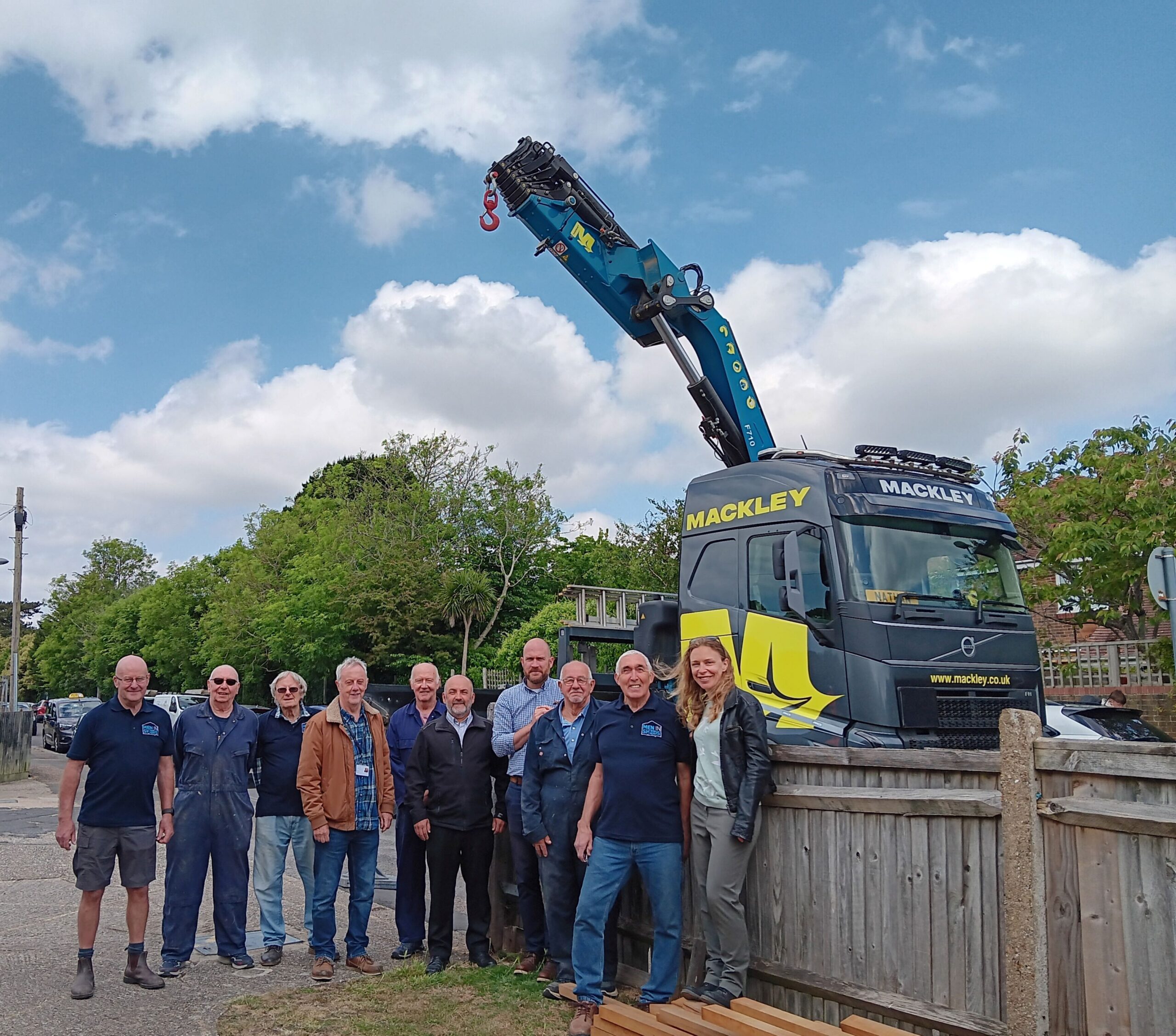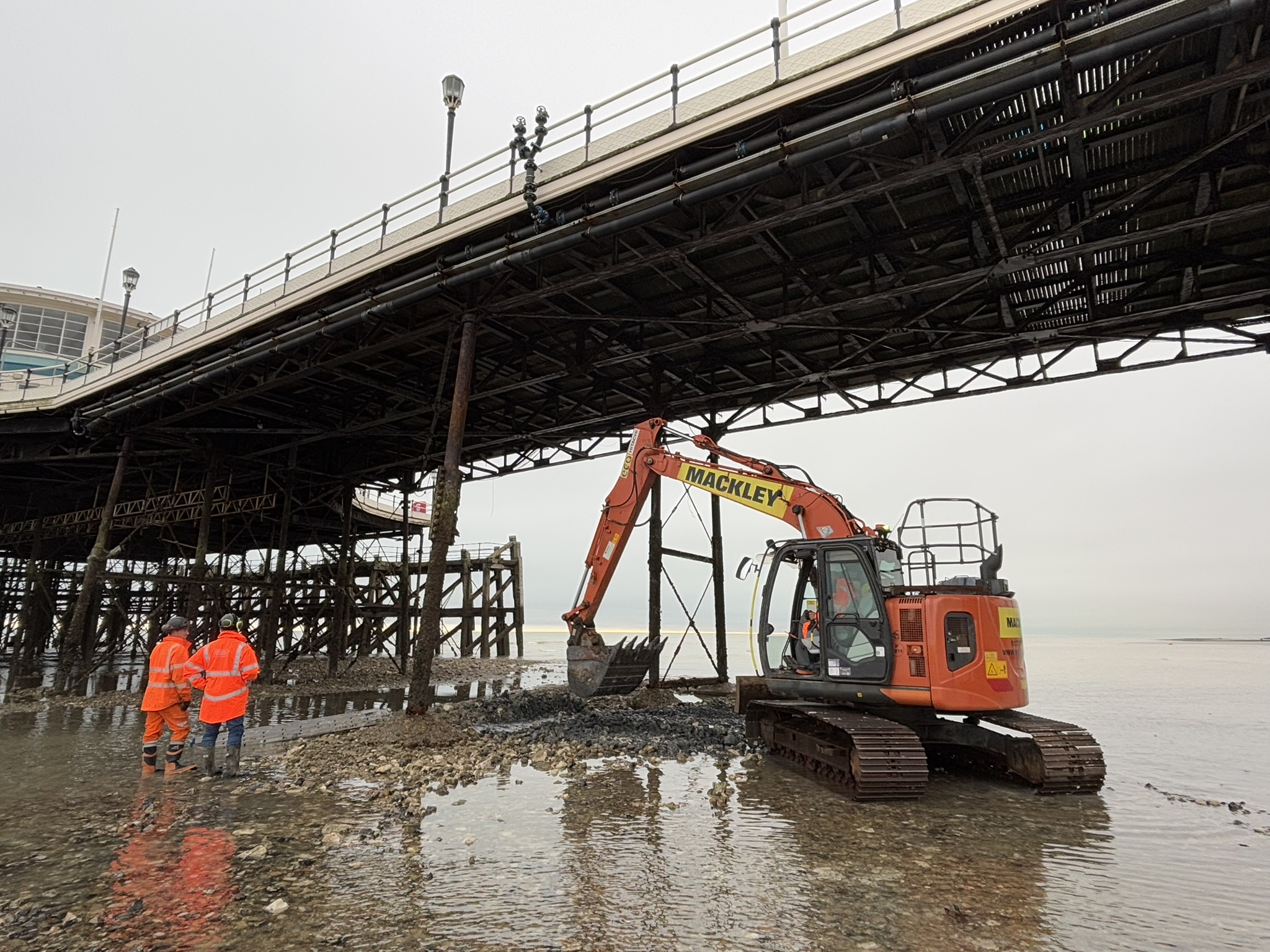
Working on behalf of the Environment Agency and as part of Team Van Oord*, Mackely is making good progress on the latest phase of major works to maintain the sea defences between Sea Palling and Winterton in North Norfolk.
The latest phase is part of the Environment Agency’s long-term Coastal Management Plan to protect the coast in this part of East Anglia, and Team Van Oord first began working in the area back in 2008.
This stretch of the Norfolk coast often erodes, increasing the risk of a breach to the seawall. This, in turn, risks flooding to agricultural land, property and designated conservation sites, including the Norfolk Broads.
The latest phase of works, which started in October 2015, will maintain protection ahead of the next strategy review.
Under the present scheme, timber and steel groynes which have reached the end of their working life are being replaced by new 70-80m long groynes built from 10-15 tonne rocks, similar to those built over the last 15 years on this stretch of coastline.
Around 24,000 tonnes of rock has been transported by barge from Norway. Due to its size, the main barge remains anchored offshore while a smaller barge transfers the rock to the beach in loads of around 1,200 tonnes.
The smaller barge arrives at the beach at high tide and unloads the rock which is then picked up at low tide by excavators and placed into its final position.
The work is taking place on a sensitive part of the coastline and the timing is governed by the need to accommodate nesting Little Terns and the Grey Seal pupping season.
Natural England, Friends of Horsey Seals and local landowners are all consulted in order to minimise the risk of disturbing any seal pups.
The dunes at the site are among the best in Europe and a designated Site of Special Scientific Interest (SSSI). The dunes are also home to Natterjack toads, while the area also has the East Coast’s largest breeding colony of grey seals.
The earliest records of human structures in northern Europe were discovered nearby and there is a legacy of unexploded ordnance and partly intact World War 2 landing craft defences.
Measures taken to reduce risks include expert monitoring of seal reactions during construction, and agreed buffer zones and a protocol for suspending works if the seals appear in any way distressed.
Full borehole surveys were also undertaken for an archaeological appraisal, and unexploded ordnance specialists drew up risk maps to guide safety measures, and are on hand to provide supervision during excavation.
The methods deployed at this site could also be used in future projects with similar challenges.
Speaking at the outset of the works, Peter Ansell from Friends of Horsey Seals, said: “We have been closely involved with the planning and operation of the works and are confident that the contractors will make every effort to minimise disturbance to the Atlantic Seal Colony during their breeding season.
“Currently the seals prefer to rest in the areas around the rock groynes already built, where sand levels are high. We hope that the new groynes will provide additional shelter and attract many more seals and tourists alike.”
Team Van Oord*
Team Van Oord is a joint venture partnership between Van Oord, Kier Group, Mackley and Royal HaskoningDHV.
11 April 2016



